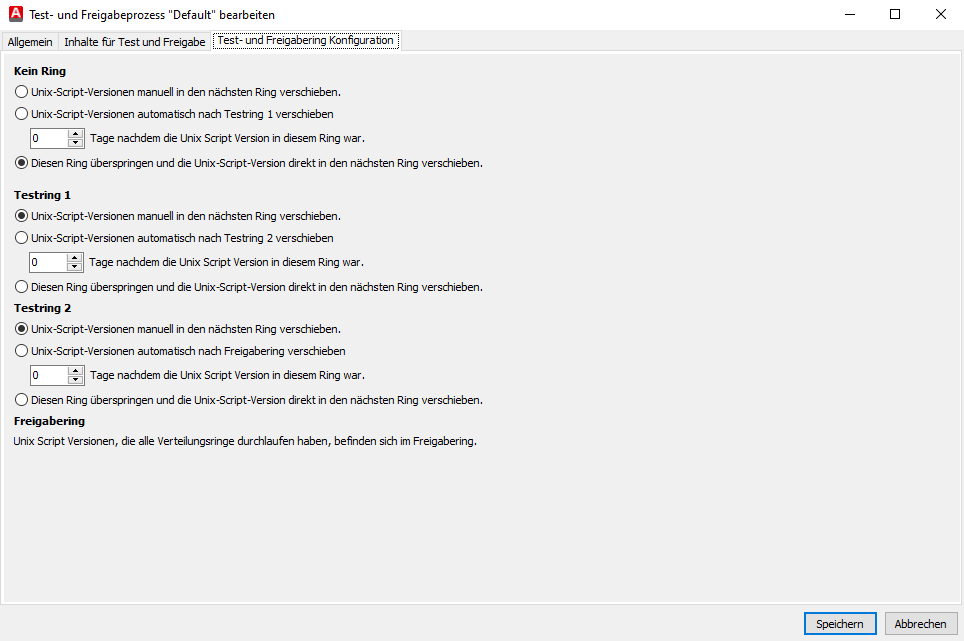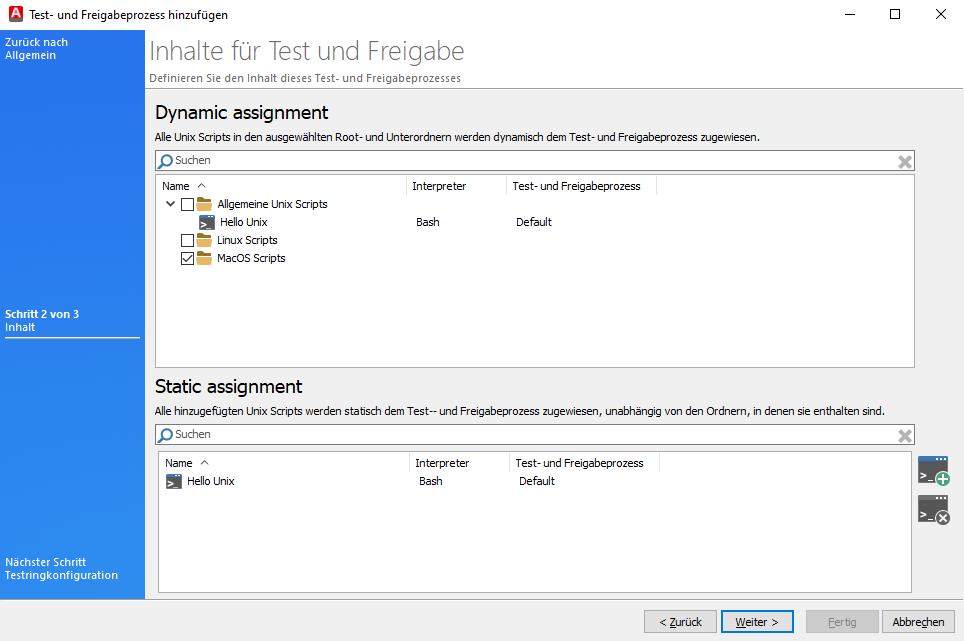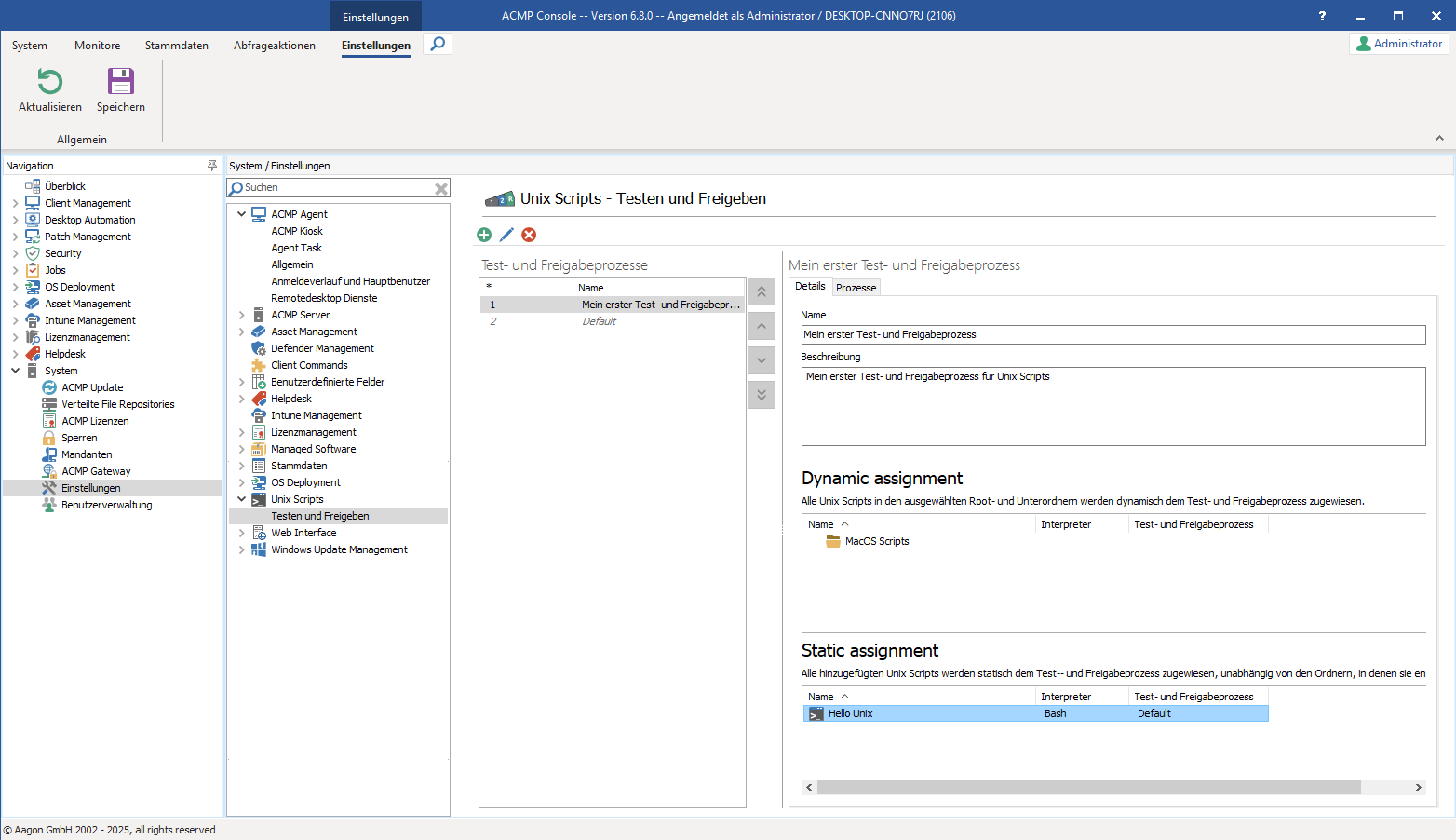Unix Scripts
In the console, navigate to System > Settings > Unix Scripts. There you can configure the test and release processes for Unix scripts. The test and release processes determine the sequence in which the Unix scripts are deployed to Unix Clients. You can also define the retention period for the various distribution rings.

Default test and release process for Unix scripts
In the delivery state of ACMP, the default test and release process for Unix scripts is defined so that Unix scripts must be moved manually between the test rings.

Configuration of the default test and release process
Add test and release processes
You can add a new test and release process via the ribbon bar or the context menu. The configuration wizard then opens. A central component is the assignment of content. For Unix Scripts test and release processes, this can be done either dynamically or statically:
- Dynamic links are created via the folders at the root level. All Unix Scripts, both individual and in subfolders, are assigned to the test and release process.
- Static links are created with individual Unix Scripts and are independent of folders.

Static and dynamic links in the test and release process of Unix scripts
You can now configure the test and release process as follows:
- Assign a name to the new test and release process.
- Add a description if necessary and click the Continue button.
- Select the Unix scripts that are to be assigned to the test and release process. The link can be dynamic or static.
- Click the Continue button.
- Define the individual settings for the various distribution rings.
- Click the Done button.
The test and release process you have created is now added to the process list above the standard test and release process and can now be managed.

Add test and release process
Change the prioritization of the test and release processes
If a Unix script is linked to more than one distribution process, the prioritization of the test and release processes determines which distribution process is used for the Unix script. You can see the priority of each process in the table on the left. The numbers below the asterisk column indicate the type of priority. Prioritization works as follows: The smaller the number, the higher the priority. Change the order by using the arrows and moving the processes to the appropriate position.
Manage test and release processes
You can edit (CTRL + E) or delete (Del) an existing test and release process. Select the corresponding entry in the list and click on the button for the respective action in the ribbon bar. When editing, a new window opens where you can edit the general information and the assigned scripts or customize the configuration again.


